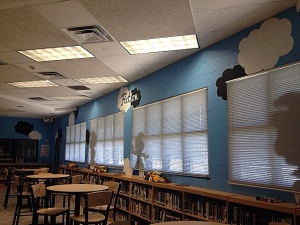I keep hearing about how everyone is flipping their classroom, and I want in on the action, too! I have already sort of dipped my toe in the flipped pond, so to speak, with my school blog, texts to students, and book trailers on my website, but I haven’t really jumped in all the way. I keep meaning to start, but where does a librarian start? Classroom teachers have it easy because they can just start with that day’s lesson, and voila, there’s your first video. But maybe it’s not so bad being a teacher librarian, because we have more freedom and luckily, access to tons of resources to help us get started.
The easiest way is to just set up a camera and video yourself, or have someone very kind and patient video you. Although it’s hard nowadays to get your hands on a Flip camera (pictured below), you can always use a smartphone or tablet to video with. One idea I had a while back and just can’t seem to accomplish is videoing students demonstrating proper library behavior, like how to check out a book or computer, or where to find a book on the shelf. It would be fun and incredibly simple, but I just never seem to find the time to do it.
There are also services like Camtasia (http://www.techsmith.com/camtasia.html) that allow you to do screen recordings if you want to create a lesson on how to use the databases or correctly cite a research paper. Camtasia isn’t free, but if you search you can find similar services that are.
Apps that can help you flip your classroom are also becoming a more regular sight. One that received an excellent review in School Library Journal is TouchCast. It’s only available on iPads right now, but it’s chock-full of tools that can help you and your students create professional-quality videos.
And finally, if you’re even less ready than me to get started with a fully flipped experience, there are tools that help you share videos that OTHER people have made. Teachem.com and Huzzaz.com are both free websites that basically allow you to curate collections of videos for your students. They both also feature interactive elements that go along with your videos.
So don’t be like me, go on and get started flipping that classroom (library)! It sounds really fun!


